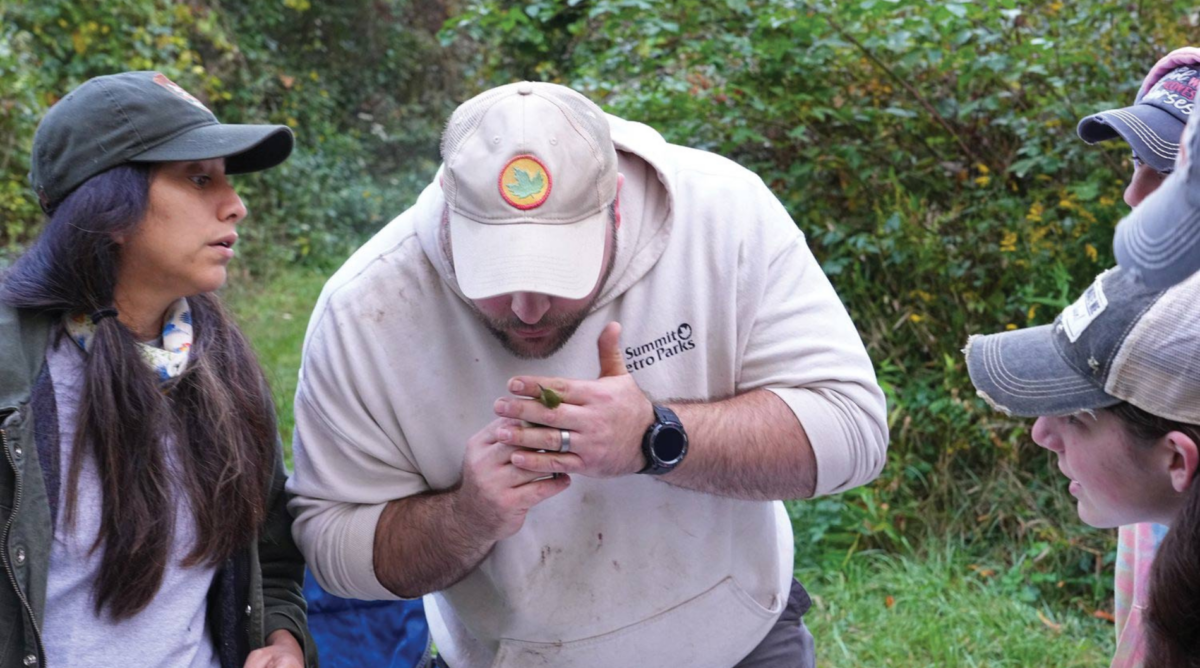
Summit Metro Parks (SMP) and the National Park Service (NPS) share stewardship of a vast expanse of high-quality habitat in Cuyahoga Valley National Park. While our organizations are different, we have a common interest in ensuring the health of our ecosystem by monitoring plant and animal species. Within the Cuyahoga Valley, there are many species of songbirds that utilize it for both migratory stop over habitat and establishing nesting sites.
The valley is home to many common and widespread bird species as well as several species designated as endangered, threatened or species of concern by the state of Ohio. NPS Biologist Mariamar Gutierrez Ramirez and I teamed up to survey and study the avian species within Cuyahoga Valley.
How do biologists survey and study birds? Conducting audial and visual surveys can tell us which species are in an area, but it can only tell so much. For studying birds in hand, biologists utilize mist nets, which are very thin specialized nets, to capture birds without causing harm. Mist nets allow us to obtain vital data on individual birds such as weight, fat content, age, sex, health and feather measurements. After the necessary information is gathered, each bird is given a unique numbered band that is placed around its leg and the bird is safely released. All the information gathered on each bird is connected to the unique number on the band so that if the bird is recaptured, biologists can look up the previous information on the individual.
NPS and SMP have partnered to do a comprehensive, long-term study of birds during spring and fall migration and the breeding season (June-August). The banding team has begun pilot programs this year for spring migration in various parts of the valley and will conduct a second season of fall migration this year. Surveying birds during migration seasons tells biologists which species are utilizing our parks for stop over habitat to refuel and as a travel corridor to and from their nesting and wintering grounds. The team will also be conducting the second season of a MAPS (Monitoring Avian Productivity and Survivorship) banding station during the summer months. The MAPS program is a multi-national program that provides critical long-term data on breeding birds within North America. This long-term survey allows park biologists to see which native species are nesting and track nesting success. Catching young, first-year birds is a clear sign that a species was able to successfully nest and fledge young. The MAPS survey can also tell us the quality of the habitat by which species are nesting in it and whether we need to take steps to improve it to make it more suitable for nesting native species.

Through this amazing partnership, SMP and the NPS work to properly document bird species in our parks, help make habitat improvements to better suit the needs of bird populations and promote a connection between people and the birds with which we share our ecosystem.
A bird banding permit is issued by the US Geological Survey Bird Banding Laboratory. All bird banders adhere to all federal and state permitting requirements and follow the guidelines of the North American Banding Council. Anyone capturing and handling native birds must be permitted or under the supervision of a permitted individual.
For more stories like this, check out Green Islands magazine, a bi-monthly publication from Summit Metro Parks. Summit County residents can sign up to receive the publication at home free of charge.




